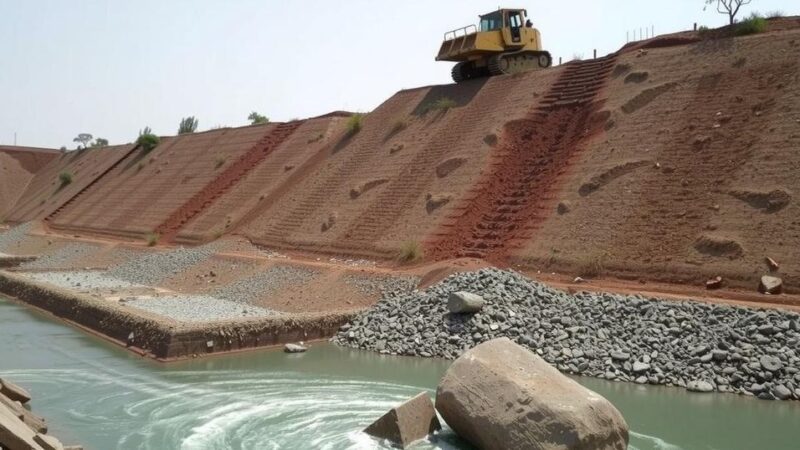The Lobito Corridor, supported by U.S. and European investments, recently marked its first shipment of copper from the DRC to the U.S. via Angola’s Port of Lobito, significantly shortening transport time compared to road transport. This railway initiative aims to enhance trade routes for critical minerals and reduce reliance on Asian markets while fostering regional economic growth.
In late August, the Lobito Atlantic Railway achieved a significant milestone by transporting its inaugural copper shipment from the Democratic Republic of Congo (DRC) to the United States via Angola’s Port of Lobito. This transport marks a pivotal development for the Lobito Corridor initiative, which is supported by the United States and Europe and aims to establish a vital transport route linking Africa’s resource-rich inland regions to export facilities along the west coast. The journey from Kolwezi to Lobito spanned over 1,300 kilometers and was completed in six days, a substantial time reduction compared to traditional road transport, according to Francisco Franca, CEO of Lobito Atlantic Railway (LAR). LAR is channeling a $250 million investment into enhancing railway infrastructure in Angola and expanding its operational capacity with the addition of 1,500 wagons. Currently, as global competition for critical minerals intensifies, particularly between China and the United States, the Lobito Corridor is positioned as a strategic asset in the supply chain for copper and cobalt, essential in green technology production. Historically, the region has witnessed extensive Chinese investment in infrastructure, particularly during the Belt and Road Initiative’s expansion, which has included significant projects such as the refurbishment of the Benguela Railway. On a broader scale, the United States has initiated the Partnership for Global Infrastructure and Investment (PGI), aiming to mobilize $600 billion in global funding by 2027 as an alternative to China’s Belt and Road Initiative. President Joe Biden has underscored the importance of the Lobito Corridor as the largest U.S. rail investment in Africa to date, noting a strengthened partnership between the United States and Angola. Currently, much of the minerals leaving the Port of Lobito head towards Asia; however, there are expectations for these shipping routes to diversify towards the U.S. and European markets in the near future. Future feasibility studies are exploring the extension of the railway to Zambia and potentially to the Indian Ocean through Tanzania, enhancing regional connectivity. While the corridor presents substantial economic opportunities, critics argue that the focus on raw material extraction may limit financial benefits for local communities, highlighting the need for value-added processing in the region. Yet, supporters of the initiative express optimism about job creation and sectoral growth resulting from enhanced infrastructure and access to global markets. “The Lobito Corridor is not just a railway line, but is the economic development along the corridor,” asserts Franca.
The Lobito Corridor is a transformative railway initiative aimed at streamlining the transport of critical minerals from Africa’s interior to the coast for export. With large reserves of copper and cobalt found in the DRC, this initiative has garnered international interest, particularly against the backdrop of the competitive global market for green technologies utilizing these minerals. The corridor seeks to revitalize outdated rail infrastructure, enhancing economic connectivity and facilitating faster transport routes.
In conclusion, the Lobito Corridor represents a pivotal development in enhancing Africa’s trade routes for critical minerals. With investments from the United States and Europe, the initiative seeks to improve infrastructure and create economic opportunities in the region, despite concerns regarding the long-term financial benefits for local communities. As the global demand for essential minerals grows, particularly from the U.S. and European markets, the Lobito Corridor may reshape the trade landscape in Sub-Saharan Africa.
Original Source: www.cnn.com







